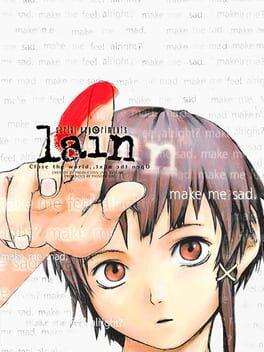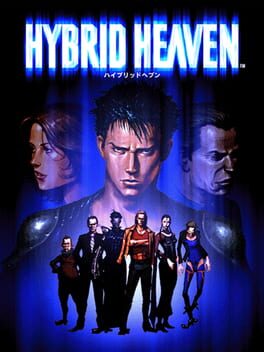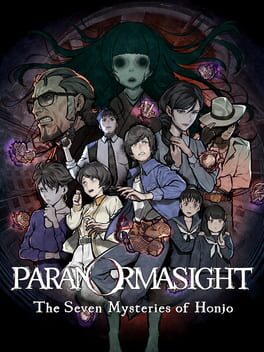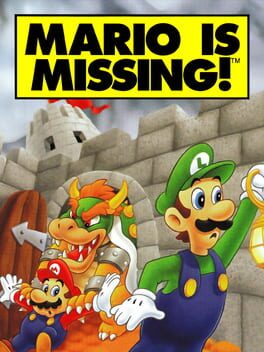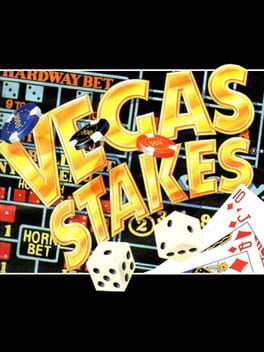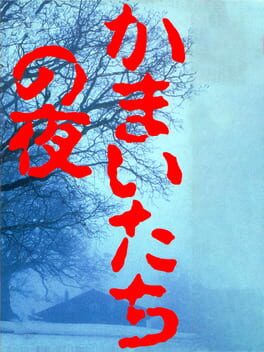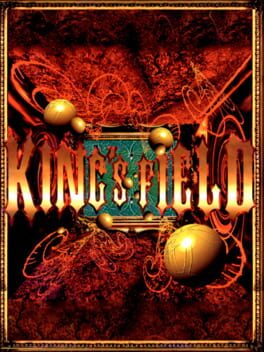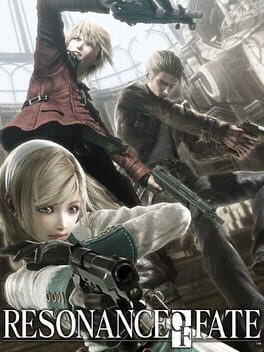epiglottis
2023
A few months before this game was released, Yasunori Mitsuda made a blog post saying that he would no longer work with composers outside of his studio. He doesn't mention Sea of Stars explicitly, but considering the feelings he discusses in the post combined with Sabotage's use of his name to promote a game that he only contributed twenty minutes of music to, the experience was likely an alienating one for him. One minute you're a hired hand on a retro RPG, the next you're the linchpin for a set of insurmountable nostalgic expectations.
I lead with this because it's an effective symbol for Sea of Stars' haphazard approach to "borrowing" from its influences. It isn't that Mitsuda's music is better than the rest - although some of the tracks in this are plodding Quest 64 pisstakes that I certainly wouldn't want to be associated with - but that the game tries to staple it and any other homage material onto itself as though the magic will still hold without any kind of context. The fact that the reference exists is paramount; the meaning that the reference supported in its original incarnation is unnecessary. This is most egregious in the empty story, twenty-five hours of plot for plot's sake, and though I won't spoil the game/waste my time belaboring how this fails in its many attempts to emulate Chrono Trigger, I will say that everything from start to finish(es) around Garl is spectacularly mishandled. Expecting me to care about someone named Garl is already an insane ask; making him this insipid and one-dimensional to boot puts the nail in the proverbial coffin.
When the game does step outside of its comfort zone and attempts synthesis or originality, it finds some success. Though I don't love the sickly lighting or the overly busy palettes, this is still an impressive graphical achievement. The first journey across the Sea of Stars gave me a little sensory rush that this medium rarely does anymore. As a mechanical experience, its interesting resource management and strong second act ultimately collapse under its balance issues, shallow growth and equipment progression, and lack of difficulty. The emphasis on combos as a means to round out the tiny movepools falls flat because outside of Mending Light they have no utility beyond breaking an awkward lock. Your best option half of the time is just a supercharged Moonerang anyway, so most combats play out the same way, and boss fights are often too long.
I think this might hit for a young or novice RPG player, but it would also be a shame to start them here when Chrono Trigger et. al. are so much richer and more meaningful. This is mostly just branding-first pay-to-play nostalgia and its rapturous reception will probably look like Kickstarters' remorse after a few years of hindsight.
I lead with this because it's an effective symbol for Sea of Stars' haphazard approach to "borrowing" from its influences. It isn't that Mitsuda's music is better than the rest - although some of the tracks in this are plodding Quest 64 pisstakes that I certainly wouldn't want to be associated with - but that the game tries to staple it and any other homage material onto itself as though the magic will still hold without any kind of context. The fact that the reference exists is paramount; the meaning that the reference supported in its original incarnation is unnecessary. This is most egregious in the empty story, twenty-five hours of plot for plot's sake, and though I won't spoil the game/waste my time belaboring how this fails in its many attempts to emulate Chrono Trigger, I will say that everything from start to finish(es) around Garl is spectacularly mishandled. Expecting me to care about someone named Garl is already an insane ask; making him this insipid and one-dimensional to boot puts the nail in the proverbial coffin.
When the game does step outside of its comfort zone and attempts synthesis or originality, it finds some success. Though I don't love the sickly lighting or the overly busy palettes, this is still an impressive graphical achievement. The first journey across the Sea of Stars gave me a little sensory rush that this medium rarely does anymore. As a mechanical experience, its interesting resource management and strong second act ultimately collapse under its balance issues, shallow growth and equipment progression, and lack of difficulty. The emphasis on combos as a means to round out the tiny movepools falls flat because outside of Mending Light they have no utility beyond breaking an awkward lock. Your best option half of the time is just a supercharged Moonerang anyway, so most combats play out the same way, and boss fights are often too long.
I think this might hit for a young or novice RPG player, but it would also be a shame to start them here when Chrono Trigger et. al. are so much richer and more meaningful. This is mostly just branding-first pay-to-play nostalgia and its rapturous reception will probably look like Kickstarters' remorse after a few years of hindsight.
Database narrative as moe personification. Impressive atmosphere and structural sensibilities, but the game's voyeuristic treatment of Lain is deeply suspect, especially given that this has one of the cruelest endings I've seen in basically anything. Doesn't help that whoever designed the UI is a psychopath.
In keeping with the free-flowing, improvisational spirit of Final Fantasy VII, a series of semi-connected thoughts:
- Lots of people are hung up on the minigames for one reason or another, and they are worthy of discussion, though not about whether they belong here (of course they do) or if they're any good (most aren't), but how their purpose has shifted between the original and this iteration. In 1997, they were tonal interludes meant to show off what a strange, crazy planet we're fighting to protect, bursting with unexpected things to see and do. In 2024, they're blown up in length and number to serve as narrative delivery devices, neatly structured to grant further dimension to one or more of your party members while also conveniently padding out the playtime of your $70 luxury consumer purchase.
More than that, even, they're ways of delaying the inevitable. Rebirth isn't really a game about a doomed planet, but a doomed woman, and everyone with the faintest knowledge of FF7 is aware of this. No matter how many sprawling overworld maps or Gold Saucer diversions or matches of Queen's Blood you throw yourself into, you're still on a beeline toward tragedy. Consider Cloud and Aerith's last "date" and how they never get exactly what they want - the candy, the tchotchke, the photo. Our choices in this world, like any other video game world, are merely a dilation of time, a hopeless attempt to forestall the medium's great historical trauma, gamer 9/11.
This is all theoretically interesting, but also has the unfortunate effect of imbricating the story's emotional slam dunk with the grim maximalist demands of the AAA market. You get what you came for... after 100 hours of wildly quality-variable content, of course. Even the Fated Event itself is compromised by a ludicrous boss rush, your characters all barking out their combat sound bites as if nothing has happened, multiversal fanservice rearing its ugly head for no discernible reason. (I ask this with no malice in my heart: why do people care about Zack enough to justify how much screentime he gets here?) In many ways this is a very simple game, but in the one moment that truly called for simplicity, all of the dubious worldline hijinks Nomura planted in the first game got in the way.
- I did find myself moved by one scene toward the end where the game briefly puts you in the shoes of a sad, scared little girl. The original FF7 made remarkable use of modifying your control scheme to convey shifts in your characters' emotional states; in Rebirth they generally overdo or mishandle it, much like everything else, but it worked well here.
- The combat is generally quite enjoyable. It's comforting to know that SE can get an action RPG right after FF16. Even with one installment worth of practice, though, some characters still feel better thought-out than others. Aerith sucks and Barret is truly just sad - what if you wanted to play Bayonetta using nothing but the guns? I have a few other complaints, like how ancillary and easily interrupted magic is, your characters' irritating lack of poise, and some hitbox tracking that would make Miyazaki blush, but they are ultimately pretty minor.
- Morph and Steal are so useless, what gives?
- Guarding feels terrible. No feedback.
- I liked the (PROTORELIC QUEST SPOILERS) fight a lot. It demands careful and attentive play but also gives you lots of options.
- The music is good, of course, although what other possible outcome could there be when you throw an exhausted supergroup of Japanese composers at one of the most beloved OSTs of all time? Unfortunately, the music is also a key factor in one of the game's great failures: it is almost perpetually unable to modulate its atmosphere. This shit is LOUD, all the time. There are no opportunities whatsoever to just be in a moment and collect your thoughts or size up your environment. I knew I was in for disappointment early on when Cloud and Sephiroth rolled into Nibelheim for their ill-fated flashback mission and I heard the sorrowful strains of Anxious Heart... followed by 15 different NPCs barking at me... followed by me stepping on a stool and dragging it noisily along with my character model for 100 feet. The din is constant from start to finish, and if you don't agree, Chadley would like to have a word or fifty thousand with you.
- This is a more personal gripe, but I feel that this trilogy's total inability to establish a horror tone is one of its great betrayals of its predecessor. The writing was on the wall with the Shinra Building in Remake; while that whole dungeon was badly handled in general, there was no attempt whatsoever at conveying any unease or fear. This is likely a result of Sephiroth being overexposed from the jump in Remake so there's no mystery, no terrible legend lurking around the corner. The horror in the original worked partly because Sephiroth was so brutal in a way that the franchise had never grappled with, but also because the world was more recognizably our own and easier to project yourself on than that of any other Final Fantasy: urban, modern, diseased, desperate, doomed. The Midgar Zolom incident makes you feel small and mortal, and the Shinra Mansion like you're a mere human enmeshed in something hostile and supernatural, but in this game those two setpieces are so fucking stupid that they're not even worth talking about.
- I know that everyone is nutting over the dumb dog song but for me the standout is One, Two, SABO!, which plays, as far as I can tell, during exactly one optional combat. Aggressively joyous and exuberant to the point of menace... love it! Fucking Cactuars!
- In a perfect world, both this game and FF16 falling short of SE's sales expectations would tell the company that the AAA open-world model is just not an effective container for video game storytelling, or at least the type that Final Fantasy made its name on so many years ago. It is my unreasonable hope that they will course correct for Part 3 and bring us back to a more focused experience, but as ever, the gamers demand more. Who are the devs to deny them the constant creep toward bigger and better?
- I really enjoyed Remake, but after this installment the project has lost its shine for me. No more remakes!
- One exception: if SE had any sort of cojones left, they would follow up this time dilation game with a remake of time kompression game FF8, omitting/streamlining all of the side content and churning out the most decadent 10-hour banger of all time, though they don't and they won't.
- Lots of people are hung up on the minigames for one reason or another, and they are worthy of discussion, though not about whether they belong here (of course they do) or if they're any good (most aren't), but how their purpose has shifted between the original and this iteration. In 1997, they were tonal interludes meant to show off what a strange, crazy planet we're fighting to protect, bursting with unexpected things to see and do. In 2024, they're blown up in length and number to serve as narrative delivery devices, neatly structured to grant further dimension to one or more of your party members while also conveniently padding out the playtime of your $70 luxury consumer purchase.
More than that, even, they're ways of delaying the inevitable. Rebirth isn't really a game about a doomed planet, but a doomed woman, and everyone with the faintest knowledge of FF7 is aware of this. No matter how many sprawling overworld maps or Gold Saucer diversions or matches of Queen's Blood you throw yourself into, you're still on a beeline toward tragedy. Consider Cloud and Aerith's last "date" and how they never get exactly what they want - the candy, the tchotchke, the photo. Our choices in this world, like any other video game world, are merely a dilation of time, a hopeless attempt to forestall the medium's great historical trauma, gamer 9/11.
This is all theoretically interesting, but also has the unfortunate effect of imbricating the story's emotional slam dunk with the grim maximalist demands of the AAA market. You get what you came for... after 100 hours of wildly quality-variable content, of course. Even the Fated Event itself is compromised by a ludicrous boss rush, your characters all barking out their combat sound bites as if nothing has happened, multiversal fanservice rearing its ugly head for no discernible reason. (I ask this with no malice in my heart: why do people care about Zack enough to justify how much screentime he gets here?) In many ways this is a very simple game, but in the one moment that truly called for simplicity, all of the dubious worldline hijinks Nomura planted in the first game got in the way.
- I did find myself moved by one scene toward the end where the game briefly puts you in the shoes of a sad, scared little girl. The original FF7 made remarkable use of modifying your control scheme to convey shifts in your characters' emotional states; in Rebirth they generally overdo or mishandle it, much like everything else, but it worked well here.
- The combat is generally quite enjoyable. It's comforting to know that SE can get an action RPG right after FF16. Even with one installment worth of practice, though, some characters still feel better thought-out than others. Aerith sucks and Barret is truly just sad - what if you wanted to play Bayonetta using nothing but the guns? I have a few other complaints, like how ancillary and easily interrupted magic is, your characters' irritating lack of poise, and some hitbox tracking that would make Miyazaki blush, but they are ultimately pretty minor.
- Morph and Steal are so useless, what gives?
- Guarding feels terrible. No feedback.
- I liked the (PROTORELIC QUEST SPOILERS) fight a lot. It demands careful and attentive play but also gives you lots of options.
- The music is good, of course, although what other possible outcome could there be when you throw an exhausted supergroup of Japanese composers at one of the most beloved OSTs of all time? Unfortunately, the music is also a key factor in one of the game's great failures: it is almost perpetually unable to modulate its atmosphere. This shit is LOUD, all the time. There are no opportunities whatsoever to just be in a moment and collect your thoughts or size up your environment. I knew I was in for disappointment early on when Cloud and Sephiroth rolled into Nibelheim for their ill-fated flashback mission and I heard the sorrowful strains of Anxious Heart... followed by 15 different NPCs barking at me... followed by me stepping on a stool and dragging it noisily along with my character model for 100 feet. The din is constant from start to finish, and if you don't agree, Chadley would like to have a word or fifty thousand with you.
- This is a more personal gripe, but I feel that this trilogy's total inability to establish a horror tone is one of its great betrayals of its predecessor. The writing was on the wall with the Shinra Building in Remake; while that whole dungeon was badly handled in general, there was no attempt whatsoever at conveying any unease or fear. This is likely a result of Sephiroth being overexposed from the jump in Remake so there's no mystery, no terrible legend lurking around the corner. The horror in the original worked partly because Sephiroth was so brutal in a way that the franchise had never grappled with, but also because the world was more recognizably our own and easier to project yourself on than that of any other Final Fantasy: urban, modern, diseased, desperate, doomed. The Midgar Zolom incident makes you feel small and mortal, and the Shinra Mansion like you're a mere human enmeshed in something hostile and supernatural, but in this game those two setpieces are so fucking stupid that they're not even worth talking about.
- I know that everyone is nutting over the dumb dog song but for me the standout is One, Two, SABO!, which plays, as far as I can tell, during exactly one optional combat. Aggressively joyous and exuberant to the point of menace... love it! Fucking Cactuars!
- In a perfect world, both this game and FF16 falling short of SE's sales expectations would tell the company that the AAA open-world model is just not an effective container for video game storytelling, or at least the type that Final Fantasy made its name on so many years ago. It is my unreasonable hope that they will course correct for Part 3 and bring us back to a more focused experience, but as ever, the gamers demand more. Who are the devs to deny them the constant creep toward bigger and better?
- I really enjoyed Remake, but after this installment the project has lost its shine for me. No more remakes!
- One exception: if SE had any sort of cojones left, they would follow up this time dilation game with a remake of time kompression game FF8, omitting/streamlining all of the side content and churning out the most decadent 10-hour banger of all time, though they don't and they won't.
2018
This is, and I swear I don't mean it pejoratively, a game for teenagers. To truly get the most of it, it asks you to 1) have the kind of patience that a large amount of free time affords you and 2) be young enough that you still find transgressive art relatively novel. These two design philosophies, repetition and transgression, work symbiotically: the cruelty of its mechanics buttresses the profoundly unpleasant aesthetic; your willingness to dive back in after repeated failure is contingent on your interest in whatever fucked up thing Haverinen can throw at you next.
For me, the game's disrespect of my time compromised the pleasures of its dark fantasy in about five hours, after I got fingerfucked to death a second time by the Harvestman. After that point, my eyes glazed over and everything started to look like mechanics to me. Every nail-biting coin flip and combat was reduced to a question of whether or not I was going to lose another twenty minutes of my precious life, and although I had previously respected the internet's insistence on playing blind, I fired up the wiki.
After another five hours of noble struggle, I realized that I was not strong enough to defeat the endgame bosses and hung it up. Maybe in the future I'll start another run, wiser and luckier, and achieve a better result. Unsatisfying? Was I filtered? Perhaps (and yes), but frankly the game is not deep enough to justify digging beyond its superficial "pleasures." It's a whole lot of lore and not much narrative ambition, an excuse to create a self-perpetuating misery engine for the player and the characters alike. The dead horse you can beat in the very first screen of the game is unfortunately more symbolic than it was meant to be.
I still admire the ferocity of its vision, its approach to the roguelike subgenre, and the unusual synthesis of its (admittedly surface-level) influences. I'll probably pick up Termina when it's on sale for $5 or so.
For me, the game's disrespect of my time compromised the pleasures of its dark fantasy in about five hours, after I got fingerfucked to death a second time by the Harvestman. After that point, my eyes glazed over and everything started to look like mechanics to me. Every nail-biting coin flip and combat was reduced to a question of whether or not I was going to lose another twenty minutes of my precious life, and although I had previously respected the internet's insistence on playing blind, I fired up the wiki.
After another five hours of noble struggle, I realized that I was not strong enough to defeat the endgame bosses and hung it up. Maybe in the future I'll start another run, wiser and luckier, and achieve a better result. Unsatisfying? Was I filtered? Perhaps (and yes), but frankly the game is not deep enough to justify digging beyond its superficial "pleasures." It's a whole lot of lore and not much narrative ambition, an excuse to create a self-perpetuating misery engine for the player and the characters alike. The dead horse you can beat in the very first screen of the game is unfortunately more symbolic than it was meant to be.
I still admire the ferocity of its vision, its approach to the roguelike subgenre, and the unusual synthesis of its (admittedly surface-level) influences. I'll probably pick up Termina when it's on sale for $5 or so.
1999
Today I am pouring one out for Konami Computer Entertainment Osaka, who produced four flawed but unique N64 titles - this, the Goemon games, and Deadly Arts - before being forced to handle their parent company's IP shovelware for the next six years. Hybrid Heaven was born from KCEO's hubristic notion that they could make a better game than Metal Gear Solid, and though there's no need to argue over who won that contest, it still proves that spite can encourage surprising ambition.
The game is frequently as stilted as it is expressive. Its only unqualified success is its industrial-adjacent soundtrack, which refines the dynamic music changes KCEO explored in Goemon to give each area a mounting sense of unearthliness. It's a great complement to the lush colors and alien geometry of the underground facility, but the game is so linear, and so hemmed in by its awkward camera, that it's hard to explore the environments and indulge in the experience on your own terms. The story is an explosive B-movie yarn that seems like it has something to say, but can't clearly express any ideas more sophisticated than "clone inferiority complex." MGS this ain't.
The combat system, first off, is inherently funny because this facility is full of freakish animal-alien-human chimeras and all of them fight like mixed martial artists. Playing with spacing and timing is fun and there are some interesting risk-reward elements, but the systems rarely encourage experimentation once you've found your winning handful of moves. Why would you ever use punches over kicks? I found the game too easy on Normal but admit that any of the higher difficulties would probably have been a drawn-out slog.
Certainly not a perfect game but ripe for rediscovery. There must be at least a few MMA/JRPG/conspiracy theory enthusiasts who have a Hybrid Heaven-shaped hole in their hearts.
The game is frequently as stilted as it is expressive. Its only unqualified success is its industrial-adjacent soundtrack, which refines the dynamic music changes KCEO explored in Goemon to give each area a mounting sense of unearthliness. It's a great complement to the lush colors and alien geometry of the underground facility, but the game is so linear, and so hemmed in by its awkward camera, that it's hard to explore the environments and indulge in the experience on your own terms. The story is an explosive B-movie yarn that seems like it has something to say, but can't clearly express any ideas more sophisticated than "clone inferiority complex." MGS this ain't.
The combat system, first off, is inherently funny because this facility is full of freakish animal-alien-human chimeras and all of them fight like mixed martial artists. Playing with spacing and timing is fun and there are some interesting risk-reward elements, but the systems rarely encourage experimentation once you've found your winning handful of moves. Why would you ever use punches over kicks? I found the game too easy on Normal but admit that any of the higher difficulties would probably have been a drawn-out slog.
Certainly not a perfect game but ripe for rediscovery. There must be at least a few MMA/JRPG/conspiracy theory enthusiasts who have a Hybrid Heaven-shaped hole in their hearts.
This must have had an unexpected scheduling or budgetary setback because after the exceptional first couple of hours it nosedives hard into jargon-heavy procedural territory. Once the game hits the daylight section, it brims over with red herrings, underexplored themes, and off-screen endings; it abandons its clever use of 3D perspective and the creeping sense of dread that perspective handily abets; and it tacks the compulsory VN metatextuality onto the ending as if it's embarrassed to even acknowledge it. The characters remain richly written and expressively designed, and you get an interesting feint toward disentangling common cultural mythology as a problem-solving method (think King of Dragon Pass), but when so many of its other ideas fail to even get off the ground, its successes feel accidental. Really disappointing.
2022
Almost thirty years after its initial release, this is still bizarrely overvalued as an emotional experience, and the remake leans into this with a florid translation meant to shore up its artistic cred. "Look, your counter-cultural adolescent fixation is actually deep and literary after all!" Square now claims of a game where you can fart on a dinosaur until it dies. The effort to canonize games as art has given birth to a whole lot of anecdotal overexaggeration, but I seriously cannot comprehend forming a legitimate bond with any of these caricatures, cute and expressive as they are.
The dishonesty is a shame, because even taken at its truer comic-book face, Live a Live has always been ambitious and rich with the spirit of experimentation that characterized Square's best work in the mid-to-late 90s. Unfortunately none of these virtues extend to the inane battle system, in which nearly every character sports ten or twelve different moves when there are at most two optimal options for any given encounter. It is no coincidence that the best chapters in the game (Sundown and Cube) are the ones that downplay the combat the most.
The Distant Future, in fact, has always been the most interesting chapter for this reason. While many of the other chapters pioneer early iterations of genre systems - item synthesis (Pogo), a crude skill point gimmick (Shifu), performance-based storytelling/rewards (Oboromaru) - Cube's chapter is brave enough to ask whether JRPG storytelling can survive without any mechanical hooks at all (save the last boss, only necessary as a justification for the frame narrative). Does it succeed? Insofar as anything ripping off two of the best sci-fi films of all time will, sure, but it's also hampered by its lack of depth. There just isn't enough time to take any of these characters anywhere interesting, and that goes for every chapter. It's a double-edged sword, because the breezy pace is a positive (and this battle system could not support a 40-hour game), but none of our seven protagonists make for especially strong anti-hate thesis statements when the time comes to wrap the whole thing up. The narrative is left fundamentally wanting, doubly so if you have even basic knowledge of English prefixes and can predict what lies in store for the final chapter.
Even if it doesn't make good on its lofty pretenses, there is plenty to enjoy here and it's one of the more justifiable expressions of the remake fetishism running rampant through the industry right now. We should at least be thankful that we got this and not Bahamut Lagoon.
The dishonesty is a shame, because even taken at its truer comic-book face, Live a Live has always been ambitious and rich with the spirit of experimentation that characterized Square's best work in the mid-to-late 90s. Unfortunately none of these virtues extend to the inane battle system, in which nearly every character sports ten or twelve different moves when there are at most two optimal options for any given encounter. It is no coincidence that the best chapters in the game (Sundown and Cube) are the ones that downplay the combat the most.
The Distant Future, in fact, has always been the most interesting chapter for this reason. While many of the other chapters pioneer early iterations of genre systems - item synthesis (Pogo), a crude skill point gimmick (Shifu), performance-based storytelling/rewards (Oboromaru) - Cube's chapter is brave enough to ask whether JRPG storytelling can survive without any mechanical hooks at all (save the last boss, only necessary as a justification for the frame narrative). Does it succeed? Insofar as anything ripping off two of the best sci-fi films of all time will, sure, but it's also hampered by its lack of depth. There just isn't enough time to take any of these characters anywhere interesting, and that goes for every chapter. It's a double-edged sword, because the breezy pace is a positive (and this battle system could not support a 40-hour game), but none of our seven protagonists make for especially strong anti-hate thesis statements when the time comes to wrap the whole thing up. The narrative is left fundamentally wanting, doubly so if you have even basic knowledge of English prefixes and can predict what lies in store for the final chapter.
Even if it doesn't make good on its lofty pretenses, there is plenty to enjoy here and it's one of the more justifiable expressions of the remake fetishism running rampant through the industry right now. We should at least be thankful that we got this and not Bahamut Lagoon.
1993
1993
Balatro whomst? I was thinking a whole lot about this game a couple of weeks ago and then, without any discussion, my brother bought a copy... the morphogenetic field is REAL...
Truly a pointless gameplay experience in 2024 unless you enjoy a dash of RNG atop your RNG, but I can never say no to a Japanese interpretation of Americana, and seeing HAL put their spin on a gaudy shithole like Vegas is a treat. Interesting sliding scale of graphical photorealism that recalls Clock Tower of all things. No way was I ever going to hit the ridiculous 10mil win condition but I tapped out after a cyborg stole half of my money.
Truly a pointless gameplay experience in 2024 unless you enjoy a dash of RNG atop your RNG, but I can never say no to a Japanese interpretation of Americana, and seeing HAL put their spin on a gaudy shithole like Vegas is a treat. Interesting sliding scale of graphical photorealism that recalls Clock Tower of all things. No way was I ever going to hit the ridiculous 10mil win condition but I tapped out after a cyborg stole half of my money.
1994
This is the first visual novel I've ever played in Japanese. It was a challenge and I'm really proud of myself! I won't claim to have caught each and every nuance, but I understood all of the endings and the general cause and effect that led to them. What follows are some off-the-cuff reflections. I try not to center myself when writing about other people's art, but since so much of my experience with this was colored by my language learning process, it's kind of unavoidable here.
I quickly realized that this would be a great choice for me as an intermediate Japanese learner: because the scenario is relatively grounded, it's written in natural, unstylized language, unlike what you'd find in a JRPG or even other genre-inflected VNs. At the same time, though, it's not the stilted, repetitive prose I often see in guided readers or other texts for people at my level. There's a vested interest in making these characters sound like characters and in developing an organic internal monologue for Toru. Between that and the context clues granted by the sound and visuals, I was able to work outward from the main idea in numerous sentences to translate unfamiliar phrases or constructions based on my understanding of the storytelling. Finally, there's nothing too complex or esoteric going on with the story or most of the characters - just good, meat-and-potatoes crime thriller writing - and it's not a long VN. It would probably take a native reader about five hours to get all the canon endings.it took me ten times as long lmao
My method at the beginning was to read a few sentences, watch this Japanese playthrough to help me look up unfamiliar kanji without radical-hunting on Jisho, then check my work with this English translation. Both of these playthroughs make a beeline to the true ending almost immediately, however, and if you know anything about visual novels, you know that much of the fun and intrigue comes from stumbling through some of the bad endings first. So I forewent my crutches and braved all eight of the "failures" alone.
Although I struggled at first, and both my self-doubt and my time spent digging through Jisho increased significantly, this was the right choice. In VN tradition, I barreled headlong into the grimmest of the grim endings and was struck by the game's eerie hopelessness. Toru, your typical goofy hornt-up VN teen hero, flails around desperately trying to make sense of the situation, growing more paranoid, angry, and violent with each error he steps into. A scene in particular that landed for me was when one character is murdered and another, who seemingly had little interest in or connection to them, is overcome with anger and sadness, and Toru has a disorienting psychic episode where he realizes that he doesn't actually know anything about any of these people.¹ It's an intriguing moment for both characters made moreso by the VN's visual and musical accompaniments. Although the character silhouettes and the muted photographic backgrounds are beautiful, the music is really where this game shines. You lose out on A LOT of this if you go straight to the good endings; you don't even learn the murderer's motives. And though I had accepted early on that I would never be able to figure out who the killer was on my own, there's simply no way to do it without finding clues in the bad endings first unless you guess luckily or cheat.
After my first ending, I had a difficult time finding the others. I wasn't always confident about what I had previously read and needed to do differently, and the UI doesn't make it much easier, so I switched from the SNES version to the PSX. They are fundamentally similar (the PSX music isn't as good, too fussed-with maybe?), but the PSX has a flowchart. Blessed be! Seeing it all laid out as I worked through the rest, each little module linked together, really drove home how unlike Kamaitachi no Yoru was from anything else on the SNES in terms of atmosphere, subject matter, and narrative structure. Its influence is undeniable; the game was a big commercial hit, and both Ryukishi07 and Kotaro Uchikoshi² have acknowledged its impact on their work. It's been a white whale for me for a long time - I first read about it maybe twenty years ago - and the experience still surpassed my expectations. To enjoy something so dark and rich and see how plainly it influenced other works that are important to me was a true privilege and made me so excited about this medium's bountiful history!
TL;DR get you a girl who can perfectly execute a one-armed shoulder throw in a time of crisis.
¹Granted, this is my interpretation, based on my shaky Japanese. If it's wrong, feel free to embarrass me in the comments. <3
²One part of this presentation a few minutes earlier, where Uchikoshi talks about how Kamaitachi no Yoru "plants its flags in the player's memory," is especially interesting given the roles Sigma and Phi serve in Virtue's Last Reward, but he keeps the connection a bit broad, presumably to avoid spoilers. Also, listen to this bop and try to tell me that Shinji Hosoe isn't a fan too.
I quickly realized that this would be a great choice for me as an intermediate Japanese learner: because the scenario is relatively grounded, it's written in natural, unstylized language, unlike what you'd find in a JRPG or even other genre-inflected VNs. At the same time, though, it's not the stilted, repetitive prose I often see in guided readers or other texts for people at my level. There's a vested interest in making these characters sound like characters and in developing an organic internal monologue for Toru. Between that and the context clues granted by the sound and visuals, I was able to work outward from the main idea in numerous sentences to translate unfamiliar phrases or constructions based on my understanding of the storytelling. Finally, there's nothing too complex or esoteric going on with the story or most of the characters - just good, meat-and-potatoes crime thriller writing - and it's not a long VN. It would probably take a native reader about five hours to get all the canon endings.
My method at the beginning was to read a few sentences, watch this Japanese playthrough to help me look up unfamiliar kanji without radical-hunting on Jisho, then check my work with this English translation. Both of these playthroughs make a beeline to the true ending almost immediately, however, and if you know anything about visual novels, you know that much of the fun and intrigue comes from stumbling through some of the bad endings first. So I forewent my crutches and braved all eight of the "failures" alone.
Although I struggled at first, and both my self-doubt and my time spent digging through Jisho increased significantly, this was the right choice. In VN tradition, I barreled headlong into the grimmest of the grim endings and was struck by the game's eerie hopelessness. Toru, your typical goofy hornt-up VN teen hero, flails around desperately trying to make sense of the situation, growing more paranoid, angry, and violent with each error he steps into. A scene in particular that landed for me was when one character is murdered and another, who seemingly had little interest in or connection to them, is overcome with anger and sadness, and Toru has a disorienting psychic episode where he realizes that he doesn't actually know anything about any of these people.¹ It's an intriguing moment for both characters made moreso by the VN's visual and musical accompaniments. Although the character silhouettes and the muted photographic backgrounds are beautiful, the music is really where this game shines. You lose out on A LOT of this if you go straight to the good endings; you don't even learn the murderer's motives. And though I had accepted early on that I would never be able to figure out who the killer was on my own, there's simply no way to do it without finding clues in the bad endings first unless you guess luckily or cheat.
After my first ending, I had a difficult time finding the others. I wasn't always confident about what I had previously read and needed to do differently, and the UI doesn't make it much easier, so I switched from the SNES version to the PSX. They are fundamentally similar (the PSX music isn't as good, too fussed-with maybe?), but the PSX has a flowchart. Blessed be! Seeing it all laid out as I worked through the rest, each little module linked together, really drove home how unlike Kamaitachi no Yoru was from anything else on the SNES in terms of atmosphere, subject matter, and narrative structure. Its influence is undeniable; the game was a big commercial hit, and both Ryukishi07 and Kotaro Uchikoshi² have acknowledged its impact on their work. It's been a white whale for me for a long time - I first read about it maybe twenty years ago - and the experience still surpassed my expectations. To enjoy something so dark and rich and see how plainly it influenced other works that are important to me was a true privilege and made me so excited about this medium's bountiful history!
TL;DR get you a girl who can perfectly execute a one-armed shoulder throw in a time of crisis.
¹Granted, this is my interpretation, based on my shaky Japanese. If it's wrong, feel free to embarrass me in the comments. <3
²One part of this presentation a few minutes earlier, where Uchikoshi talks about how Kamaitachi no Yoru "plants its flags in the player's memory," is especially interesting given the roles Sigma and Phi serve in Virtue's Last Reward, but he keeps the connection a bit broad, presumably to avoid spoilers. Also, listen to this bop and try to tell me that Shinji Hosoe isn't a fan too.
2023
A subpar character action game with an embarrassing case of Game of Thrones envy. Zero risk, conviction, or imagination; drained of visual and sonic color a la the Popular Genre Content style it so desperately apes; ceaseless irrelevant worldbuilding painted over with a patina of bleakness to make you feel like you're experiencing something important. Little more than a major victory for marketing and PR, if its reception is anything to go by.
2022
There are many things to admire about Pentiment, but the one I keep coming back to is the game's refusal to let your build-linked dialogue choices always be the ideal options in a conversation. This is extremely rare, even in other games that are celebrated for their writing. It's an effective reminder that not everyone you meet has a need for or interest in your superior cognition. It also dissuades you from minmaxing Andreas (silly as the thought may sound), encouraging a build based on your own personal interests rather than one engineered to produce the highest number of optimal outcomes. You're best served if you're in it for the love of learning, much like Andreas himself; gamers looking to exhaust every conversational tree and win every heart and mind are not going to have fun.
This is especially important to remember given Pentiment's assertion that powerful people prey on the ignorance and incuriosity of others in order to preserve their power. We are responsible for making our own meaning in this world, yes, but we must do so without losing sight of history, lest the ruling class create their own.
This is especially important to remember given Pentiment's assertion that powerful people prey on the ignorance and incuriosity of others in order to preserve their power. We are responsible for making our own meaning in this world, yes, but we must do so without losing sight of history, lest the ruling class create their own.
1994
2010

